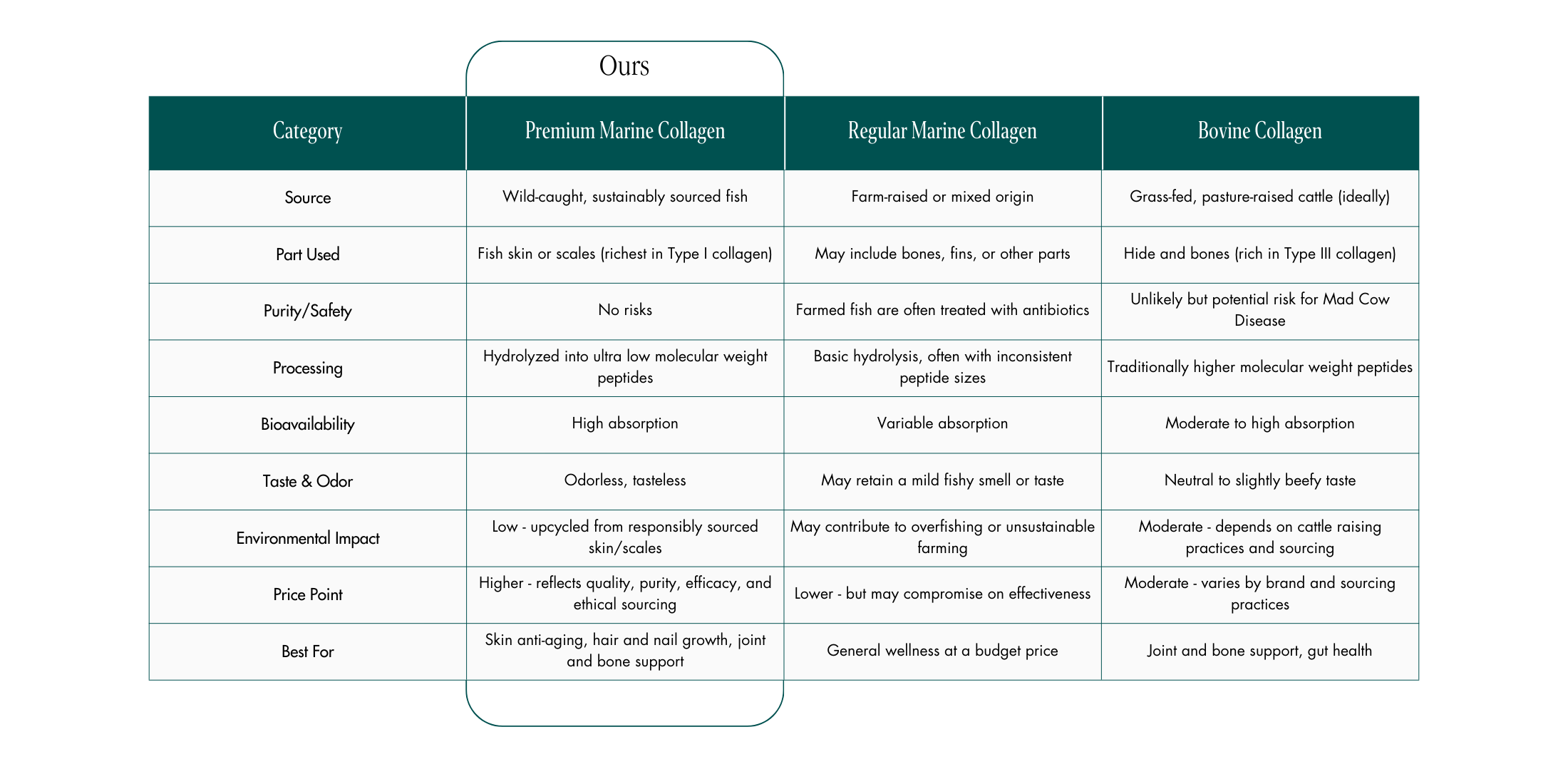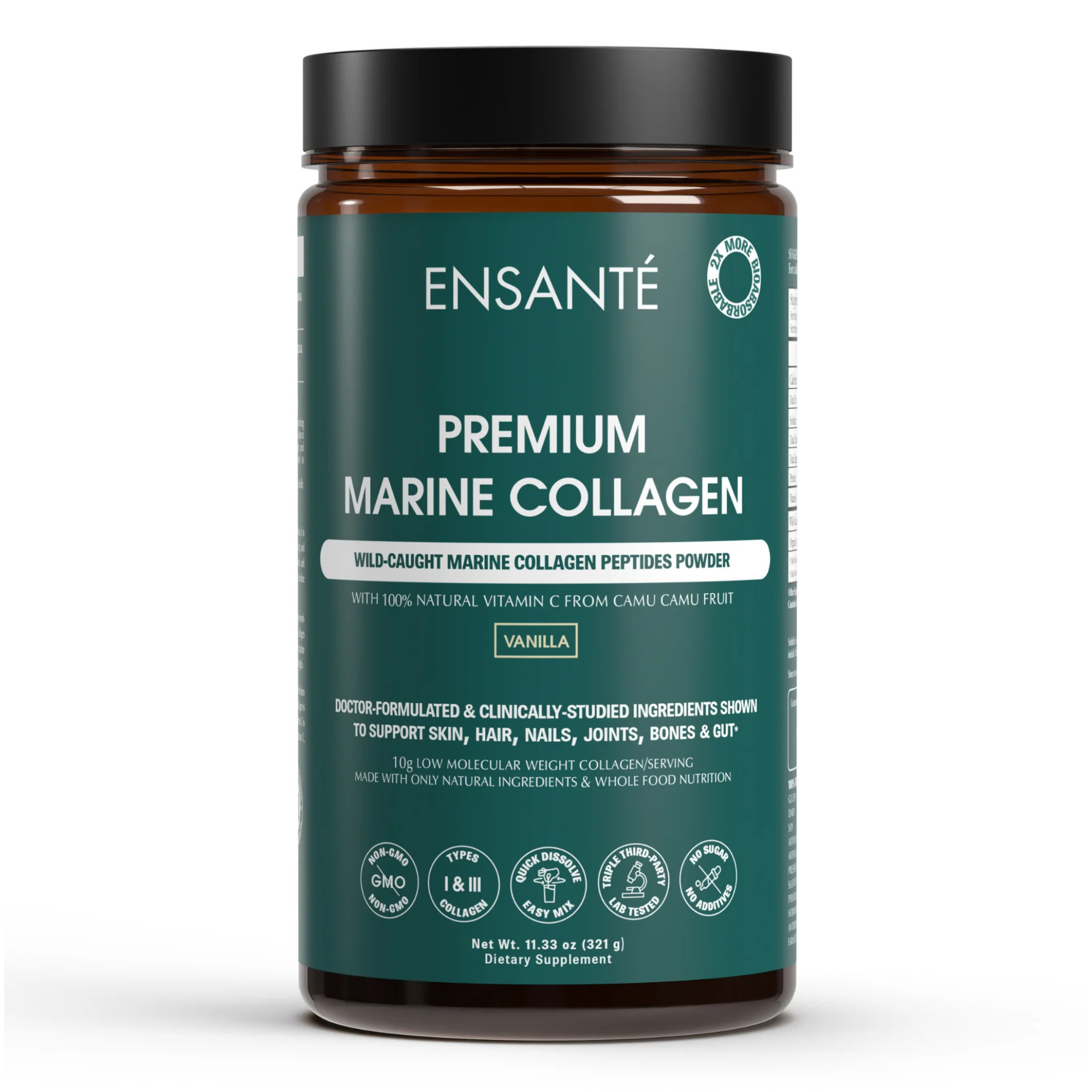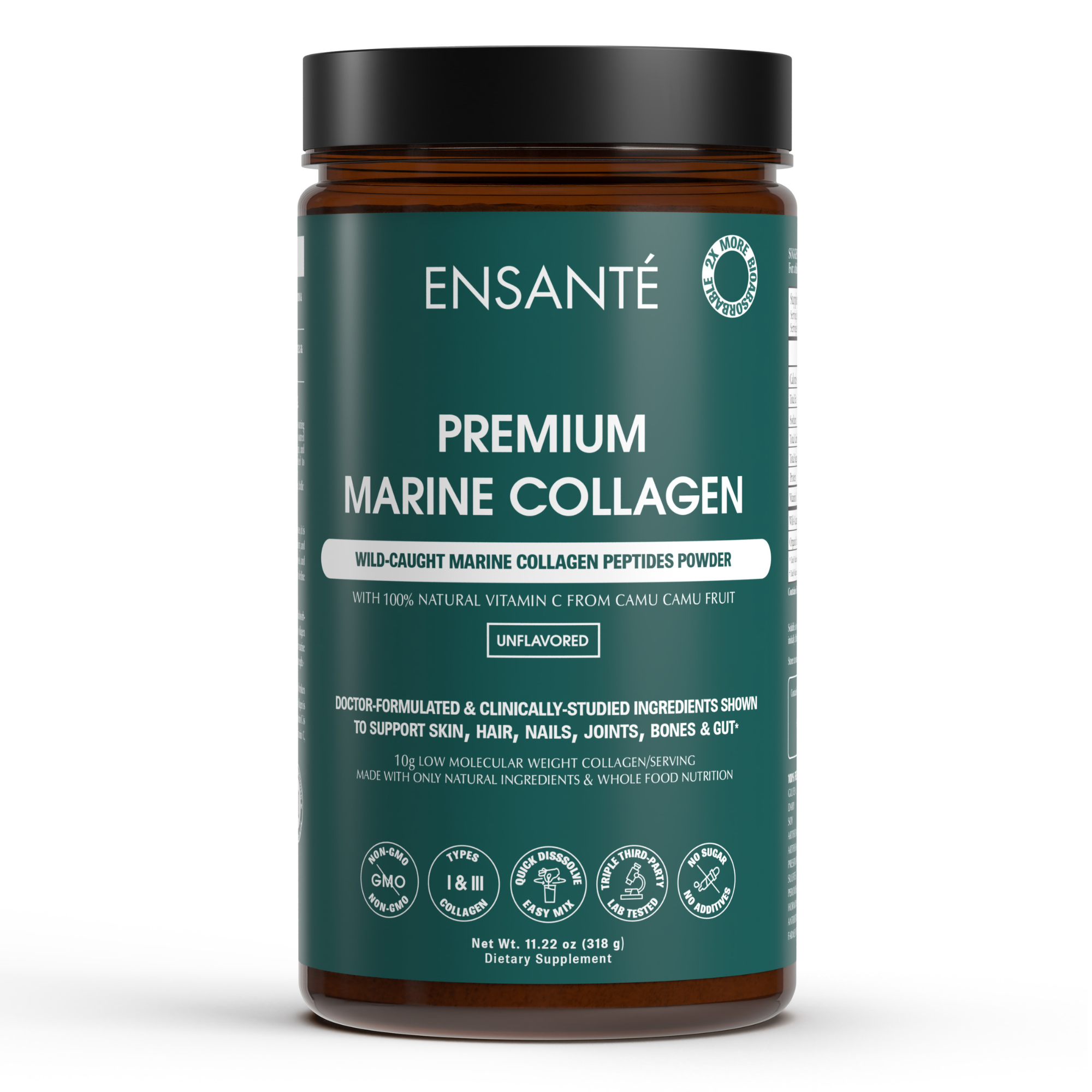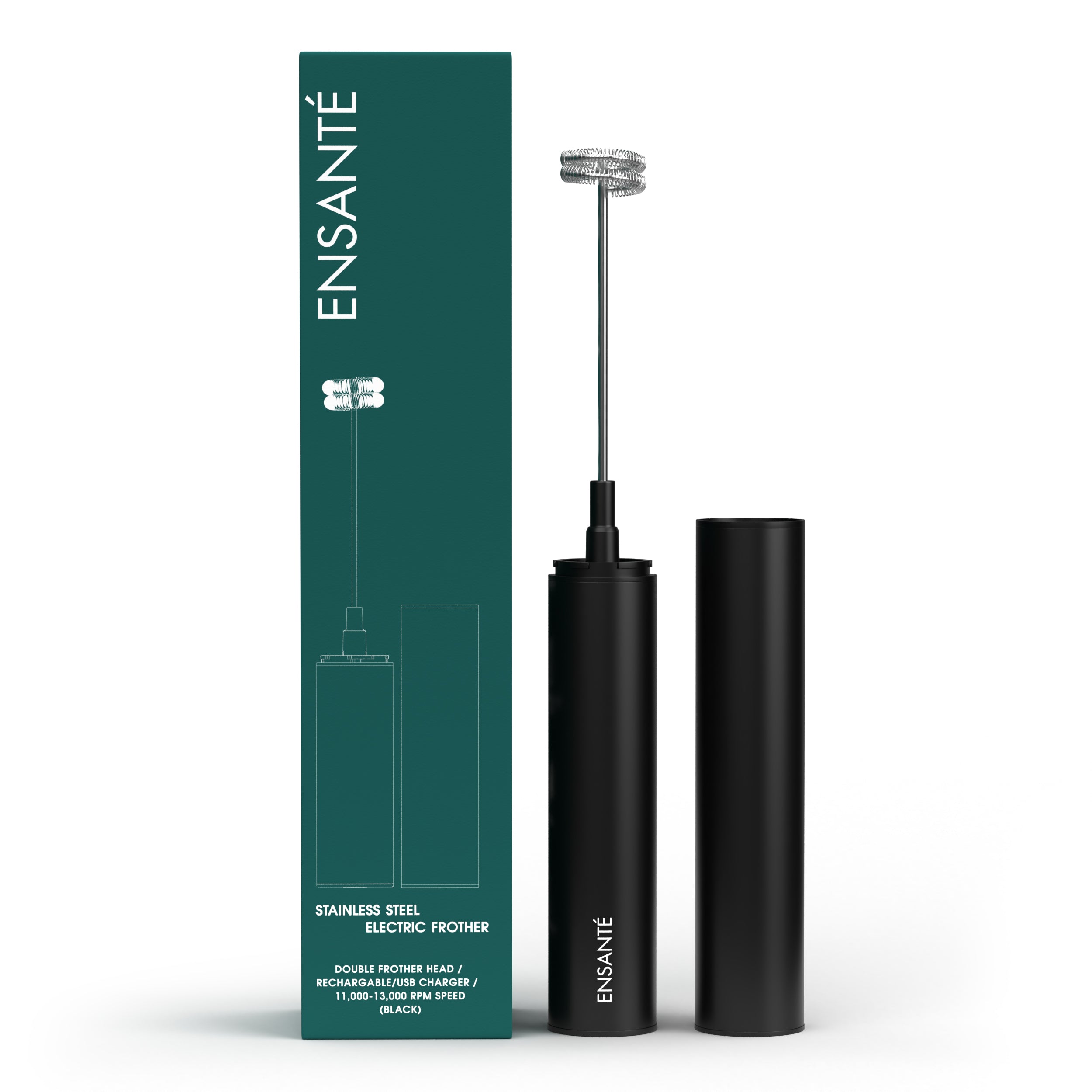Why Collagen
Collagen is the most abundant protein in the human body, essential for maintaining the strength, elasticity, and structure of skin, joints, bones, and connective tissues.
As we age, natural collagen production declines, leading to visible signs of skin aging, and decreased joint and bone health. Supplementing your diet with collagen powder can help significantly restore these levels and combat the effects of aging.
Marine collagen is widely considered the most superior form of collagen due to its high bioavailability compared to other sources. Marine collagen peptides provide the richest source of type I collagen, making up over 90% of the body’s total collagen and serving as the key building block for healthy skin, hair, nails, and bones, while also being the most easily absorbed by the body.





